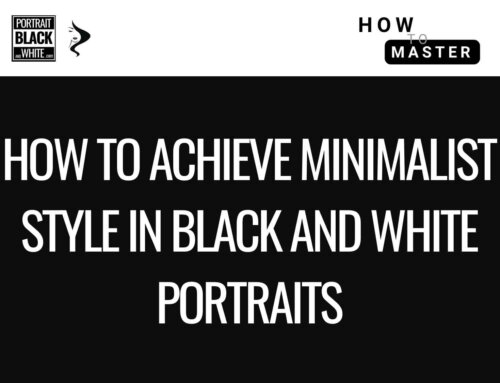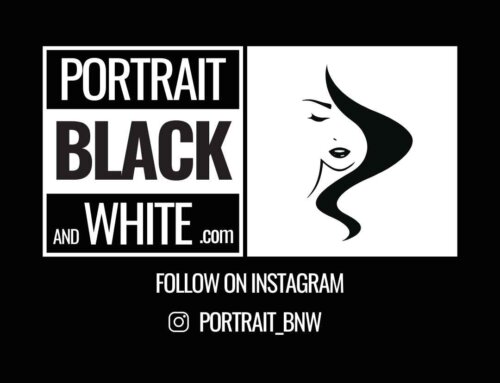A black and white portrait should feel alive. It should have depth, dimension, and character. Yet, one of the most common frustrations photographers face is producing an image that feels flat—a face without sculpting, tones that don’t separate, or shadows that fail to add interest. Flatness doesn’t mean underexposed or soft; it means the portrait lacks the visual tension that makes monochrome compelling.
The good news is that flatness is rarely the fault of the subject—it usually comes from choices in lighting, exposure, or editing. Understanding why portraits lose depth and how to correct it is the key to unlocking images that look sculpted rather than lifeless.
What Makes a Portrait “Flat”?
In monochrome, the illusion of three dimensions comes from how light interacts with form. A flat portrait often shows:
- Minimal separation between subject and background.
- Shadows that are too weak or too strong, leaving no gradation.
- Overuse of global adjustments that wipe out local contrast.
- Skin that looks like a uniform patch of gray, with no tonal variation.
Flatness is not just a technical issue; it breaks emotional impact. Without depth, the viewer sees a photograph, not a person.
Common Mistake 1 – Relying on Overcast Light Without Direction
Cloudy skies create soft light, but if it falls evenly across the face, the result can be dull. Without highlights and shadows to shape features, portraits feel two-dimensional.
Fix:
Even in overcast conditions, create direction. Position the subject near a building edge, doorway, or tree line to block some light and create gentle falloff. A small reflector or even a dark piece of fabric can serve as negative fill, introducing contrast that the sky removed.
Common Mistake 2 – Setting Black and White Points Too Aggressively
Crushing blacks or pushing whites to pure extremes might add “contrast” in a global sense, but it sacrifices the micro-gradations that give skin its natural shape. The result: harsh edges, but still flat faces.
Fix:
Anchor whites and blacks with restraint. Keep true texture visible in highlights (cheekbones, forehead) and shadows (jawline, hair mass). Use curves to shape midtones rather than global contrast sliders, preserving detail in the process.
Common Mistake 3 – Forgetting Subject–Background Separation
Flat portraits often occur when subject and background share the same tonal range. If both sit in mid-gray, the eye can’t distinguish one from the other.
Fix:
Change either subject placement or angle of light. A darker background behind a lit subject—or a lit wall behind a shadowed profile—creates separation. In editing, local dodging or burning can increase contrast selectively between subject and environment.
Common Mistake 4 – Using Only Global Adjustments
A quick slider push for “contrast” or “clarity” boosts the whole image equally. This removes subtle tonal transitions and makes skin appear chalky or metallic, without adding real depth.
Fix:
Work locally. Apply micro-contrast selectively to eyes, lips, hair, or clothing seams. Use negative clarity on broad cheek or forehead areas to keep them soft. Depth comes from controlling where contrast lives, not everywhere at once.
Common Mistake 5 – Ignoring the Role of Shadows
Fear of shadows often leads photographers to overfill or flatten them. But shadows define form. Without them, the face becomes a flat surface.
Fix:
Embrace shadows as design elements. Position light at an angle (short lighting, Rembrandt triangle, split lighting) to carve structure. Instead of erasing shadows, let them fall naturally while controlling their depth. Even a subtle shadow under the jaw adds three-dimensionality.
Common Mistake 6 – Over-Smoothing in Post
Skin-smoothing tools and noise reduction sliders can destroy fine tonal variations. Without pores, micro-highlights, or texture, skin becomes plastic, and the portrait loses realism.
Fix:
Retouch gently. Protect texture in expressive zones (eyes, mouth, brows) and avoid removing every wrinkle or line. Instead of eliminating detail, guide attention with selective softening. Natural imperfections often add depth and honesty.
Common Mistake 7 – Ignoring Midtone Placement
In black and white, midtones carry most of the emotional weight. If they all cluster around the same value, the portrait looks flat regardless of how strong blacks and whites are.
Fix:
Use curves to separate midtones. Lift highlights in skin while allowing clothes or background to fall slightly darker. Burn creases, eye sockets, and jawlines while dodging cheekbones or lips. Small tonal differences in midtones create depth without needing heavy contrast.
Practical Workflow to Fix Flat Portraits
- Evaluate capture: Is there tonal separation between subject and background? If not, adjust light or subject placement before editing.
- Convert with intention: Use channel mixing to map colors to gray in a way that creates separation (lighten skin, darken background tones).
- Set anchors carefully: Establish black and white points without clipping detail.
- Shape midtones with curves: Introduce subtle S-curves tailored to the subject.
- Apply local contrast: Eyes, hair, lips gain crispness; broad skin stays smooth.
- Dodge & burn: Sculpt cheekbones, jaw, nose bridge for three-dimensionality.
- Refine texture: Preserve micro-detail while keeping surfaces natural.
A Mental Model: Sculpting, Not Flattening
Think of editing black and white portraits as sculpting with light. Global adjustments are like swinging a hammer—they affect the whole block. Local adjustments are like chisels—they define the shape. Flatness often comes from using only the hammer.
The goal is not extreme contrast, but intelligent contrast: highlights that feel luminous, shadows that suggest depth, and midtones that carry subtle transitions.
Final Thought
Flat black and white portraits are not inevitable. They happen when light, exposure, or editing decisions remove dimensionality. By understanding how to use shadows, midtones, and local adjustments, photographers can turn flat captures into portraits that feel sculpted, emotional, and alive.
Depth is not created by sliders alone—it is built through attention, restraint, and the deliberate shaping of tones. When handled with care, a monochrome portrait transcends the paper or screen, inviting viewers to see not just a face, but a presence.




Scrivi un commento